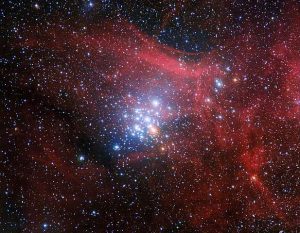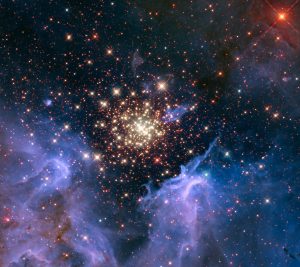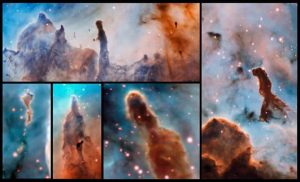costellazione della Carena
Nuove Fondamentali Scoperte su NGC 3293
Osservazioni condotte tramite l’Osservatorio a raggi X Chandra della NASA hanno permesso di ricavare informazioni fondamentali sulla popolazione stellare del giovane ammasso NGC 3293. Continua a leggere
Gemme Preziose nel Pozzo dei Desideri
Questa straordinaria immagine del brillante ammasso stellare NGC 3532, ripresa dal telescopio dell’MPG/ESO a La Silla ricorda un insieme di gemme preziose o il bagliore colorato di luci natalizie. Alcune stelle risplendono ancora di un caldo tono bluastro, ma molte tra le più massicce sono diventate giganti rosse e brillano di una vivace tonalità arancio. Continua a leggere
Scintillio di Stelle
Una giovane, scintillante collezione di stelle si presenta come uno spettacolo celeste di fuochi d’artificio. L’ammasso è circondato da nubi di gas e polveri interstellari, la materia prima per la formazione di nuove stelle. La nebulosa, che si trova a 20.000 anni luce di distanza nella costellazione della Carena, contiene un ammasso centrale di stelle ardenti e massicce, chiamato NGC 3603. Continua a leggere
Creazione e Distruzione
Un team internazionale di astronomi guidato da Anna McLeod ha analizzato nuove spettacolari osservazioni di vaste strutture simili a colonne all’interno della Nebulosa della Carena, ottenute utilizzando lo strumento MUSE sul Very Large Telescope dell’ESO. Pur trattandosi di formazioni di natura analoga ai famosi Pilastri della Creazione nella Nebulosa Aquila, un termine più appropriato per descriverle potrebbe essere “pilastri di distruzione”. Continua a leggere



